World 🢖 Europe 🢖 Latvia 🢖 Zemgale
Palaces and country houses 🢔 Houses 🢔 Architectural wonders 🢔 Categories of wonders
Wonder
Rundale Palace
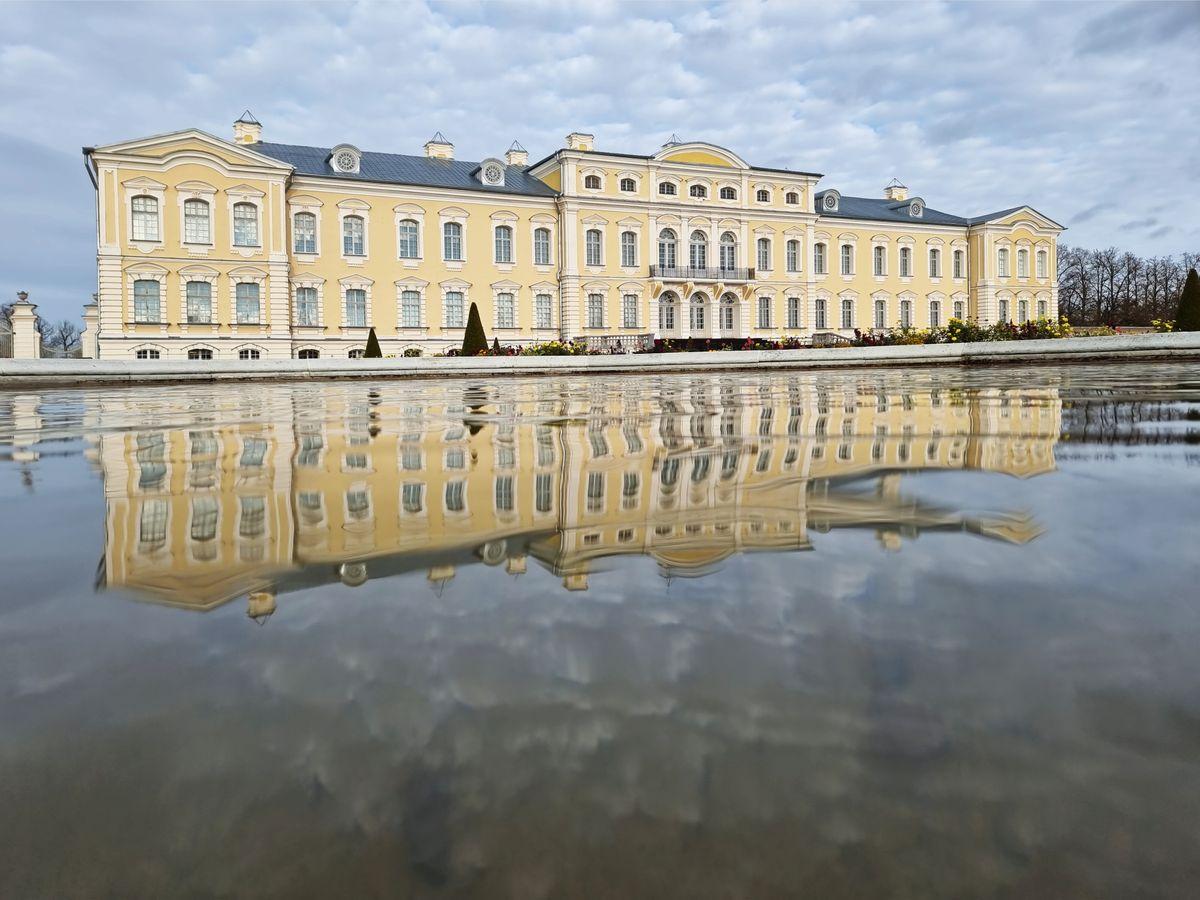
 In short
In short
The most magnificent historical palace in Latvia is Rundale Palace (Rundāle Palace). This large Baroque palace was built as a summer residence for the Duke of Courland and Semigallia Ernst Johann von Biron in 1736-1768. Today it has been meticulously renovated and is surrounded by gorgeous, immense gardens and parks.
63.8 %
GPS coordinates
Name in Latvian
Architectural style
Architect
Year of construction
Map of the site
If you see this after your page is loaded completely, leafletJS files are missing.
 In detail
In detail
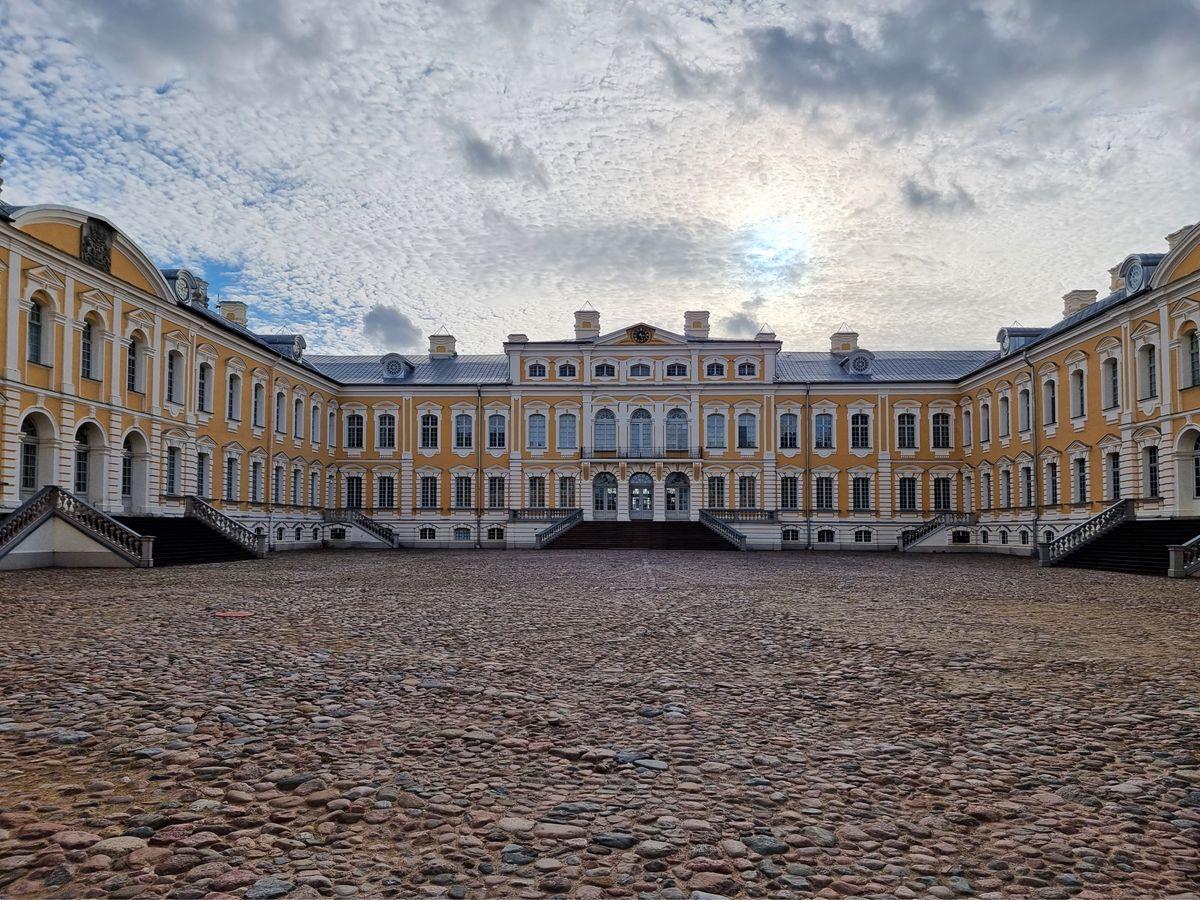
There is a wealth of palaces in southern Zemgale. Over one day an explorer can visit medieval, Renaissance, Baroque, Neo-Classicism, and Eclecticism castles and palaces. But there is one palace that stands out among all this architectural wealth – it is more magnificent than any other palace in this area. This is Rundale Palace – the gem of the architectural heritage of Latvia.
History
In a way Rundale Palace was born twice. First, of course, was its construction during the 18th century. Its second birth was the long, complex, and unbelievably persistent renovation from 1972 to 2016 in spite of the dramatic political and economical turns in Latvia during this time period. Today this palace complex with its surrounding park has surpassed the ambitions of its initial owner: a piece of rare luck for historical palace buildings!
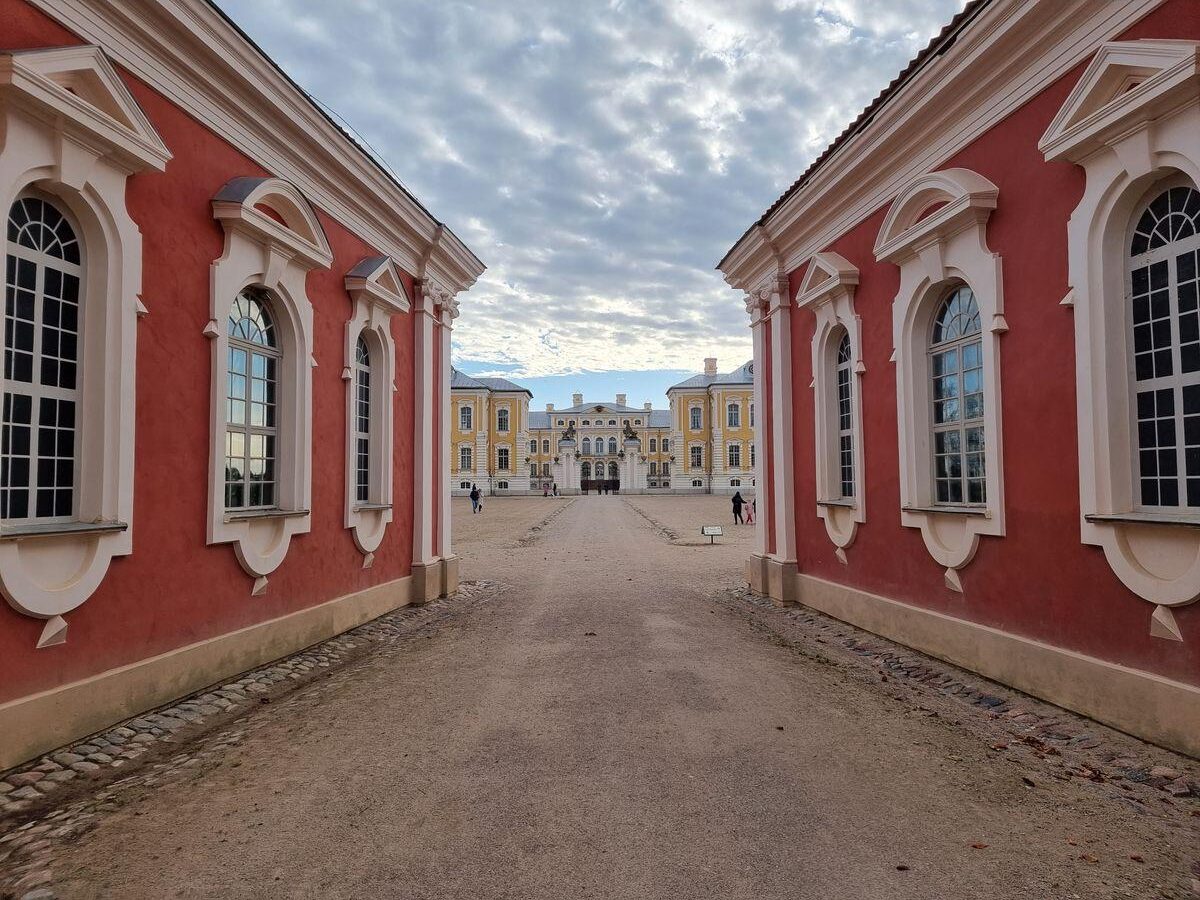
The timeline of this palace is as follows:
- Beginning of the 16th century – the first known palace, or, rather, a castle was built near the present-day palace. This stone structure, most likely, was in a bad state when the construction of the present-day palace started.
- 1735 – Duke of Courland and Semigallia Ernst Johann von Biron purchased the Rundale Manor for 42 000 thalers. In these times Duchy of Courland and Semigallia was a largely independent part: the vassal state of the Polish-Lithuanian Commonwealth. Duke Biron, a skilled and ruthless careerist, was implanted in his position by the Russian Empire, thus symbolizing the growing influence of the empire in the Baltic region. The influential, rich duke planned to build his summer residence in Rundale.
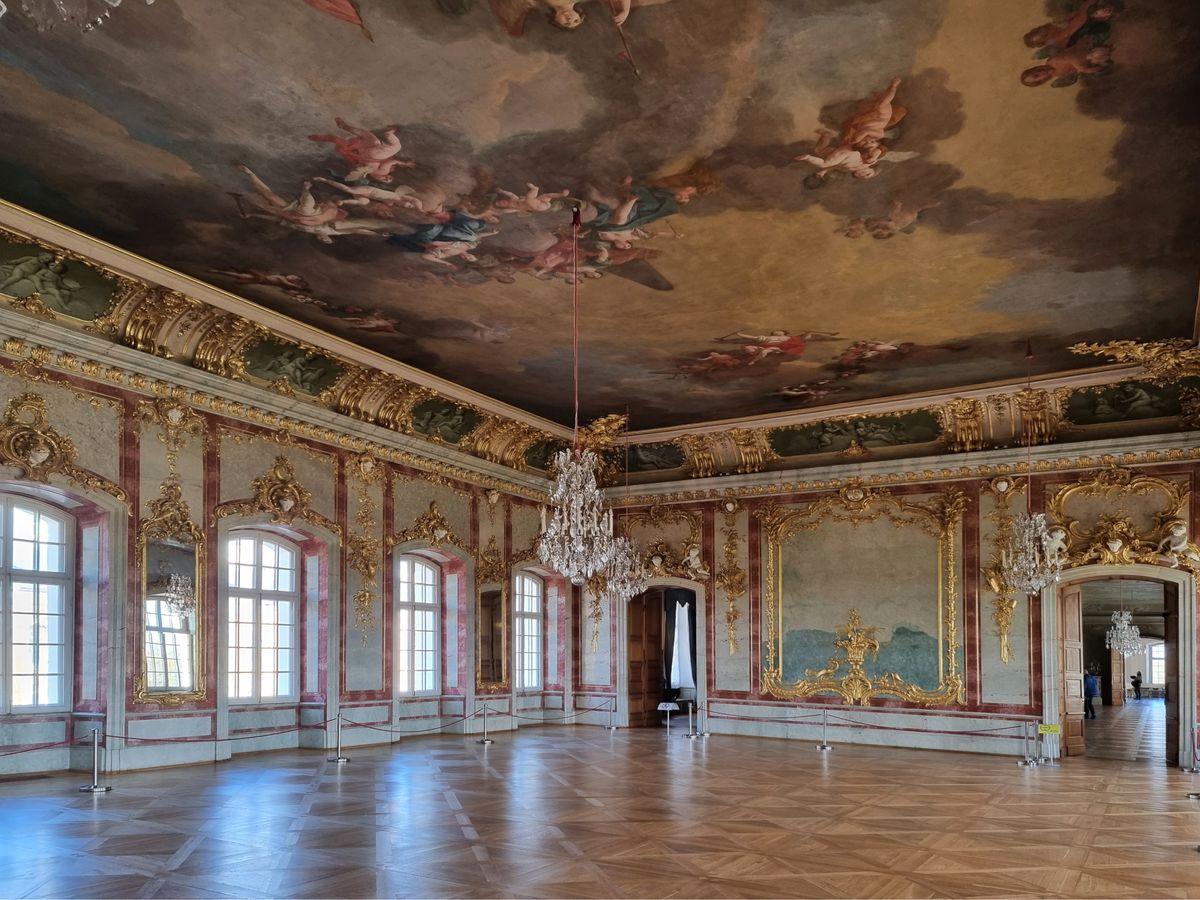
Rundale Palace, Gold Hall / Gatis Pāvils, CC BY-SA 3.0 - 24 May 1736 – the construction of the palace was started. Italian architect Francesco Bartolomeo Rastrelli was invited from Saint Petersburg to design and lead the construction of the palace. He was fairly young but quite popular at the court of the Russian Empire. The opulent, luxurious Baroque architecture by Rastrelli was beloved among the Russian Empire nobility that always loved to show off its wealth. The Duke of Courland and Semigallia did not want to stay behind the ambitions of the Russian Tsars.
- 1736-1740 – construction of the new palace. The old castle was demolished fully (except for the recently discovered fundament) and materials were used for the new palace. At the same time, another palace was under construction in Jelgava: the capital of Courland and Semigallia, and Jelgava Palace was of a higher priority then. Thus, the construction of Rundale Palace was not too fast and the initial scale of the project was decreased.
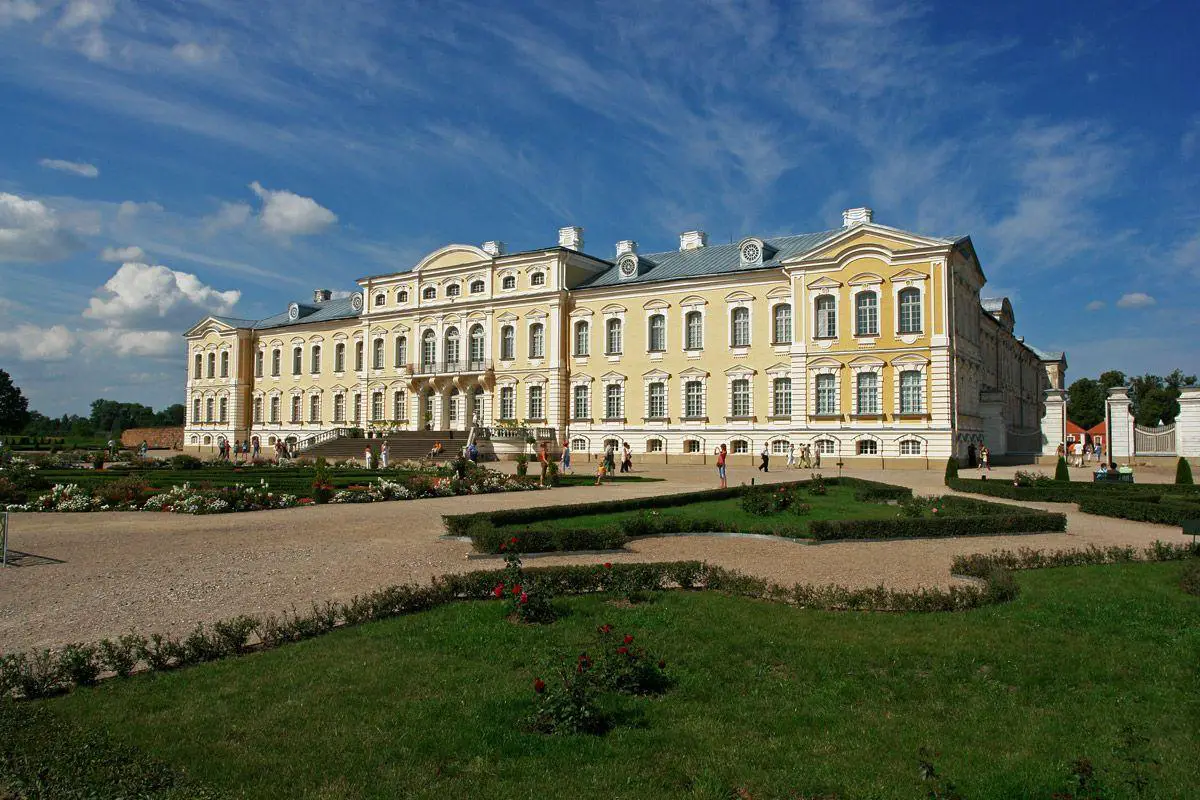
Rundale Palace / Gatis Pāvils, CC BY-SA 3.0 - 1740 – the Duke of Courland and Semigallia became the most influential person in the Russian empire: he was appointed to be the regent of the Empire during the infantry of Ivan IV… and after three weeks he was arrested, all his properties confiscated and he with his family were sent to Siberia. Construction activities in Rundale were stopped.
- 1740-1762 – the unfinished palace was left empty and abandoned.
- 1762-1768 – Ernst Johann von Biron was released from his exile and Empress Catherine II of Russia returned to him the Duchy of Courland and Semigallia. Also, architect Francesco Bartolomeo Rastrelli returned to his old projects in Rundale and also Jelgava. The opulent interiors of the palace rooms to a large extent were created by the invited German sculptor Johann Michael Graff and belonged to the next era in architecture and art: Rococo.
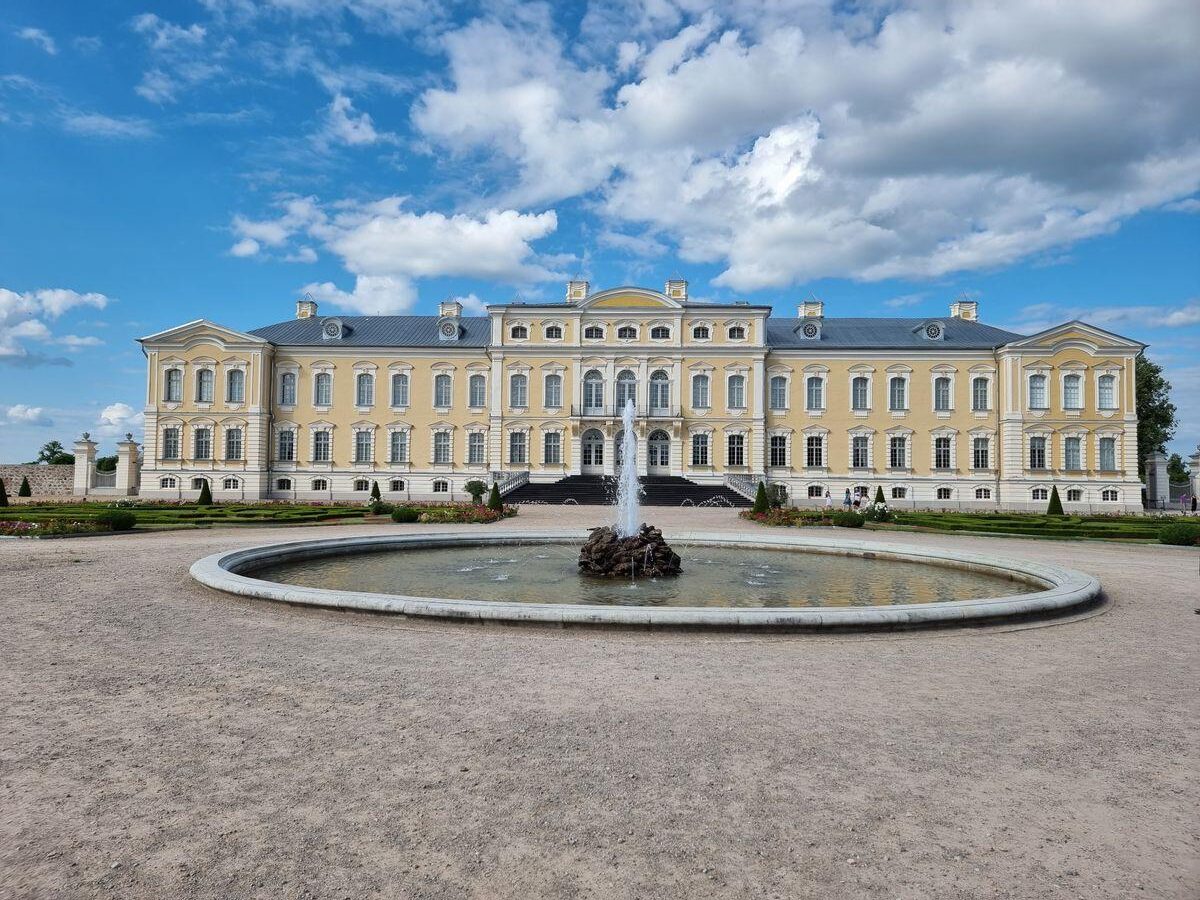
Rundale Palace / Gatis Pāvils, CC BY-SA 3.0 - 1795 – the Duchy of Courland and Semigallia was absorbed into the Russian Empire and the palace was presented to the young but well-known Russian Count and general Valerian Zubov.
- 1812 – in the palace was stationed the hospital of Napoleon’s army. The interiors of the palace rooms to a large extent were demolished and ravaged.
- 1822 – through the marriage, the palace became the property of another influential family of Russian nobility: Shuvalovs who with varied success maintained and redesigned the interiors of the palace and surrounding park throughout the 19th century and early 20th century.
- 1919-1920 – during the Latvian Independence War the palace was partly demolished and burned by the Russian Volunteer Army of Bermontians.
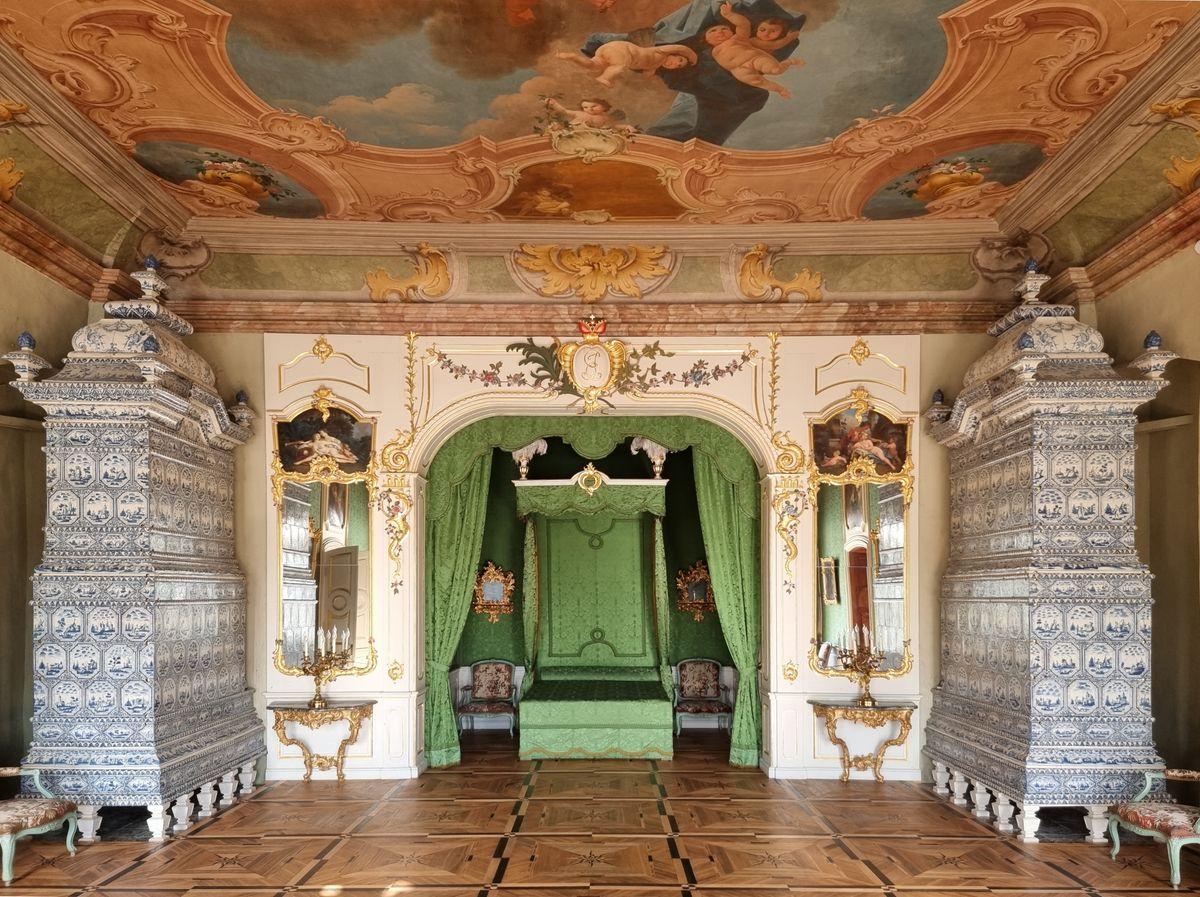
Rundale Palace, Duke’s Bedroom / Gatis Pāvils, CC BY-SA 3.0 - 1924 – the palace was included in the list of architecture monuments.
- 1920ies – after gradual, simple reconstruction the palace was adjusted for the local school. For a while, military veterans lived in a part of the palace.
- 1930ies – while part of the palace was used for the school, in parts of the palace restoration works were started and later slowed down by World War II.
- 1945 – part of the palace was used as a grain storage facility. The building in the coming decades gradually was turning into ruins and the park around it was rather a forest.
- 1972 – Rundale Palace museum was established. An ambitious plan to restore the whole palace to its situation in the late 18th century was set. Thorough restoration works started.
- 1981 – the first reconstructed rooms were presented to the stunned public. Gradually, with more and more restored rooms the palace turned into a major tourist destination.
- 2014-2016 – the restoration works in the palace were completed and the whole building now is a museum, often used as a cultural venue. These long works involved numerous people but the long-time director of Rundale Palace museum Imants Lancmanis is seen as the driving force behind this process.
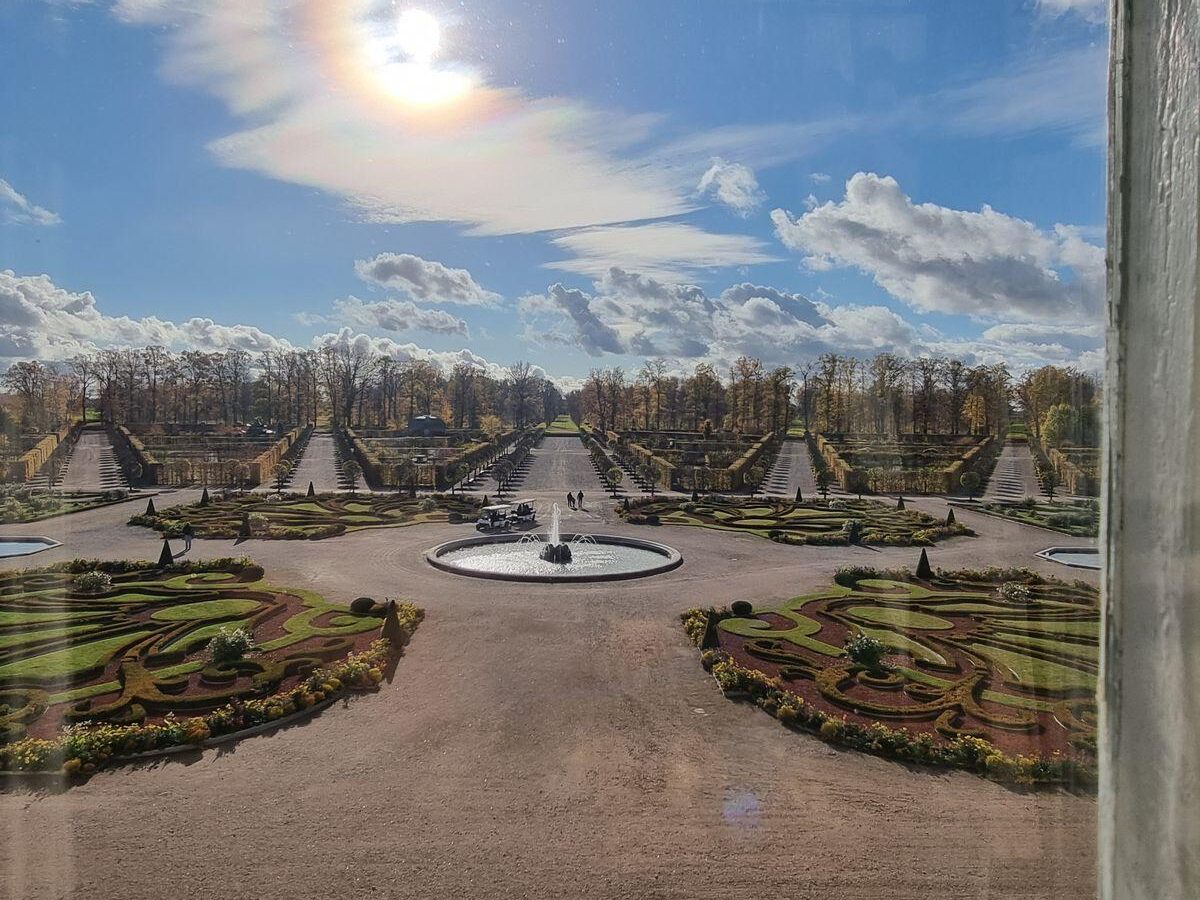
The park around the palace is not just the continuation of the magnificent structure but a major value by itself. A thorough reconstruction of the park was started together with the palace reconstruction and by 2020ies the works in the park achieved the initial 18th-century plans (that were not achieved in the 18th century) and in many aspects surpassed them.
Values
Rundale Palace has a comparatively austere Baroque exterior. It has two floors and surrounds the inner court from three sides. In the central part were apartments of the duke, in the western wing lived his family. In the eastern wing were rooms for representational events and audiences.
In the palace are 138 rooms, many of which have luxurious interiors. In total it is planned to renovate historical interiors in 43 rooms.
Some of the most beautiful rooms are:
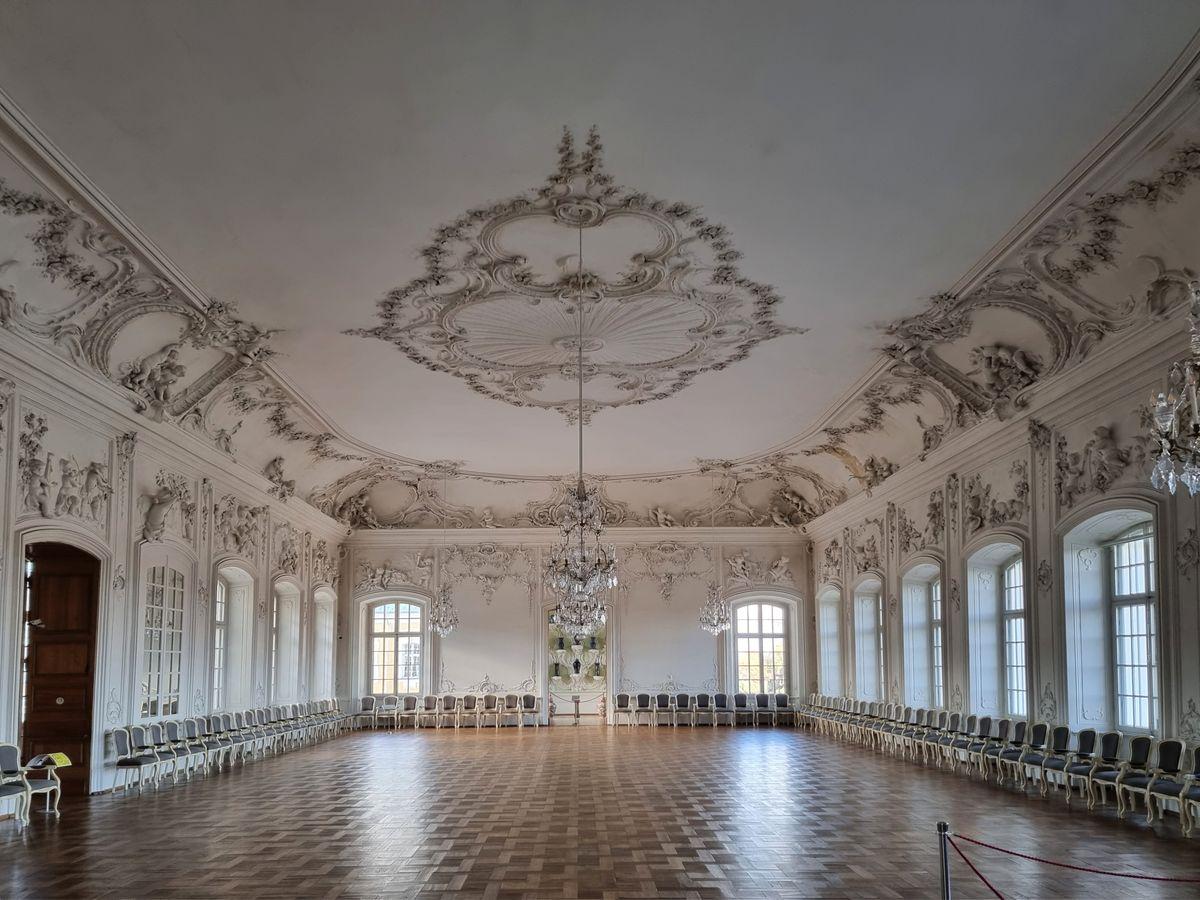
- Gold Hall – an opulent, representative room with gold-covered Rococo adornments, frescoes and stucco marble. The ceiling is adorned with an enormous fresco made by Francesco Martini and Carlo Zucchi. It shows a mythical event: the imaginary apotheosis of Duke Ernst Johann von Biron.
- White Hall – this large hall was initially planned to be a chapel but… it somewhat ended to be a ballroom. Contrary to the colorful Gold Hall this really is a white room. Nevertheless, it is ornate, adorned with stucco elements.
- Porcelain Cabinet – small room at the Gold Hall, that has an exquisite collection of Oriental vases on Rococo-styled consoles.
- Oval Porcelain Cabinet – another collection of Oriental porcelain on 45 ornate consoles.
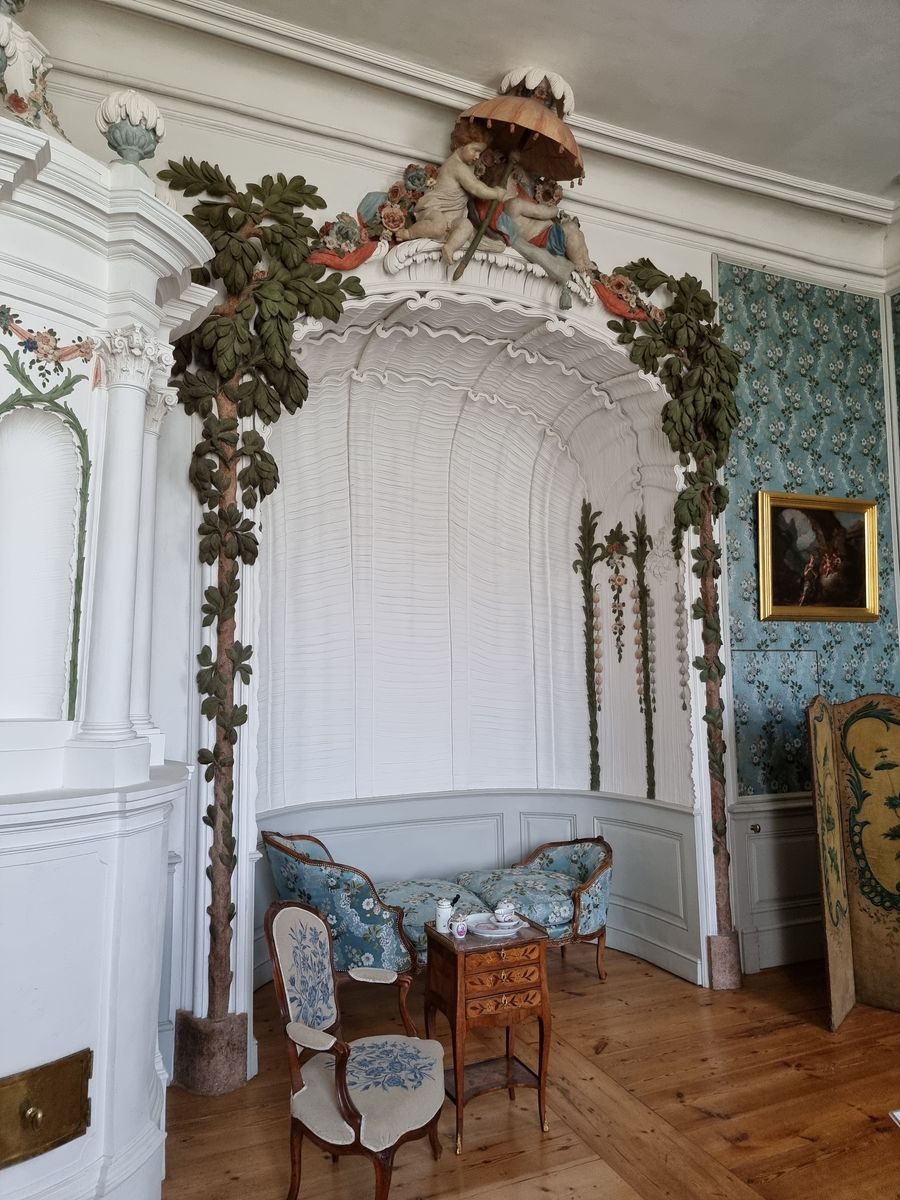
The Duchess’ Boudoir / Gatis Pāvils, CC BY-SA 3.0 - Grand Gallery – a long hall that was used for banquets. This room has amazing frescoes on the walls and ceiling.
- Library – a room with oak-wood bookcases and a wonderful frescoes on the ceiling.
- Rose Room – a sumptuous room where a rose color dominates. It is devoted to Flora – goddess of spring and flowers.
- Duke’s Bedroom – the central room in the palace with a grand view on the park. The central element of this room, of course, is the bed of the Duke.
- Duchess’ Boudoir – gorgeous room with colored stucco garlands and sculptures. Under a shell-formed niche is located duchesse brisée – a piece of furniture where the noble lady could rest.
- Duchess’ toilet-room – an ornate private room with the Baroque era washing bowl, bidet and diverse other utilities.
- Kitchens – two palace kitchens with giant hearths and a rich set of kitchen utensils from the 18th century.
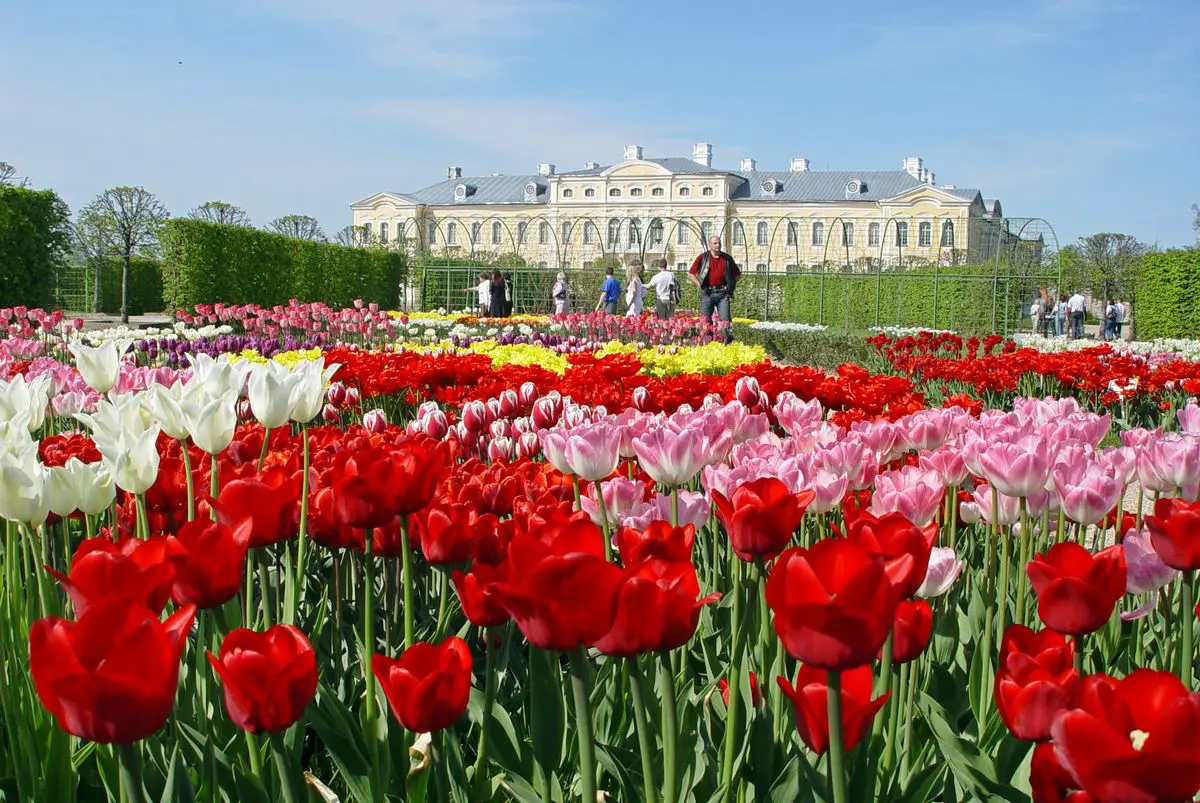
At the palace are other historical buildings: stables and carriage house, the residence of servants (the “White House”), a gardener’s house, and others.
Around the palace is an extensive, gorgeous garden in French formal style with a system of channels and also a hunting park. This garden is a major value by itself with its incredible collection of more than 2 000 varieties of roses (including a unique collection of historical varieties of roses), a rich collection of fruit trees, and countless other beautiful plants.
References
- Rundāles pils muzejs, the official site of the Rundale Palace Museum. Accessed on July 26, 2022.
 Linked articles
Linked articles
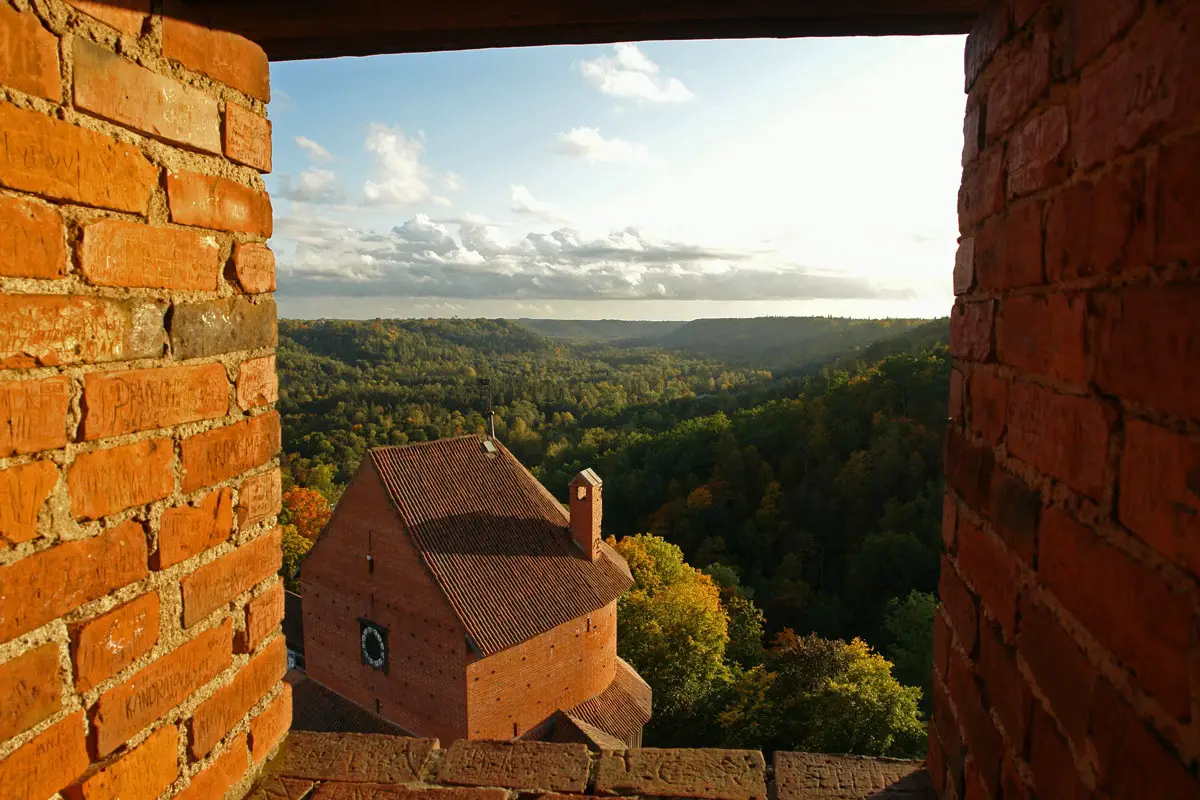
Wonders of Latvia
Highlights of Latvia are the rich architectural heritage in Riga City, numerous palaces, country houses, and castles.
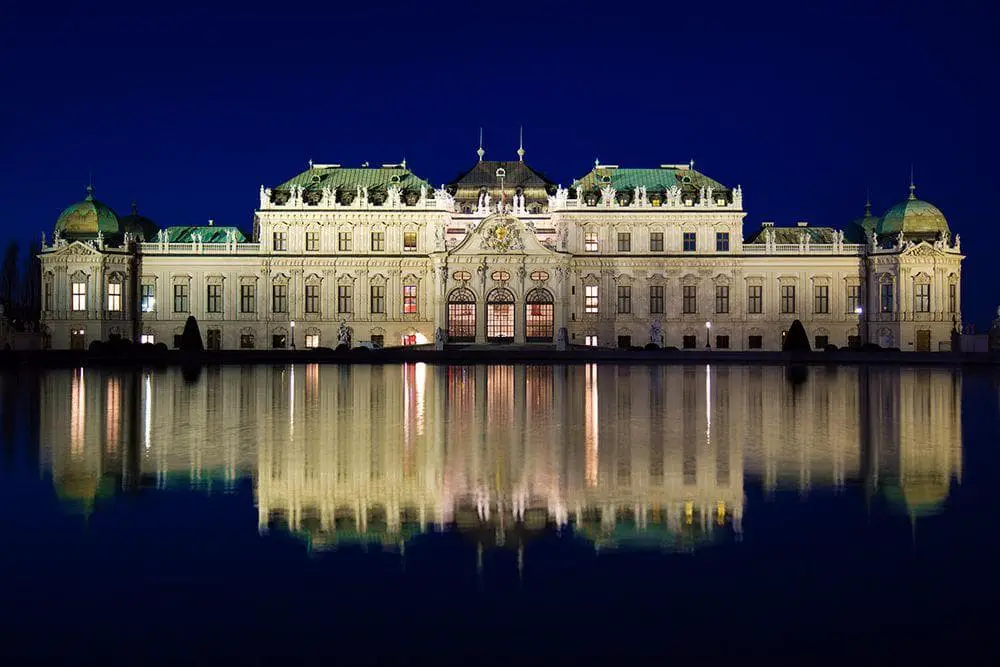
Palaces and country houses
Palaces are impressive residences of important and/or affluent persons. Some palaces belong to the world’s most impressive structures: they are large, with beautiful architecture and hundreds or even thousands of ornate rooms that can be filled with works of art.
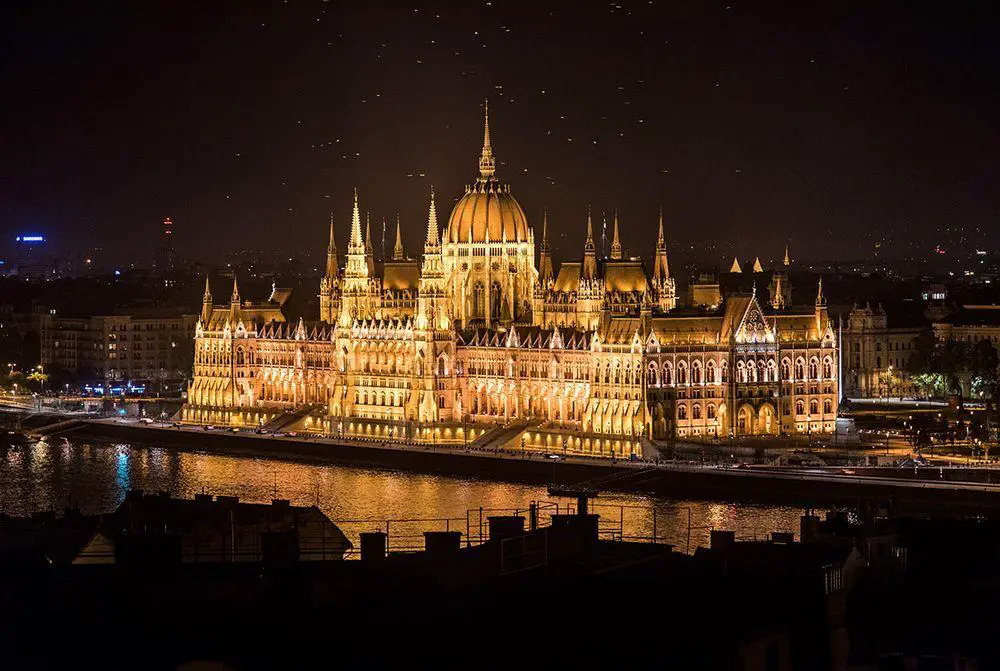
Wonders of Europe
The heritage of Europe is diverse and endlessly interesting. Incomparably rich is the wealth of European historical architecture, but this part of the world has exciting natural heritage and archaeological heritage as well.
 Recommended books
Recommended books
The Triumph of the Baroque: Architecture in Europe 1600-1750
This fascinating and expansive catalog, published to coincide with a ground-breaking exhibition, explores every facet of European baroque architecture.
The baroque style of architecture arose from the Mannerist style of the seventeenth century. At its height, it encompassed all the arts and embodied the message of the Counter-Reformation. This style spread from the Rome of Bernini and Borromini to Versailles, Wurzburg, and St. Petersburg-indeed all over Europe.
Castles & Palaces of Europe
The most beautiful and important castles and palaces of Europe are presented here in a single volume. 240 color illustrations and high-quality photographs, along with background information, historical facts, and entertaining anecdotes, make this is an indispensable reference for lovers of architecture and history alike.


